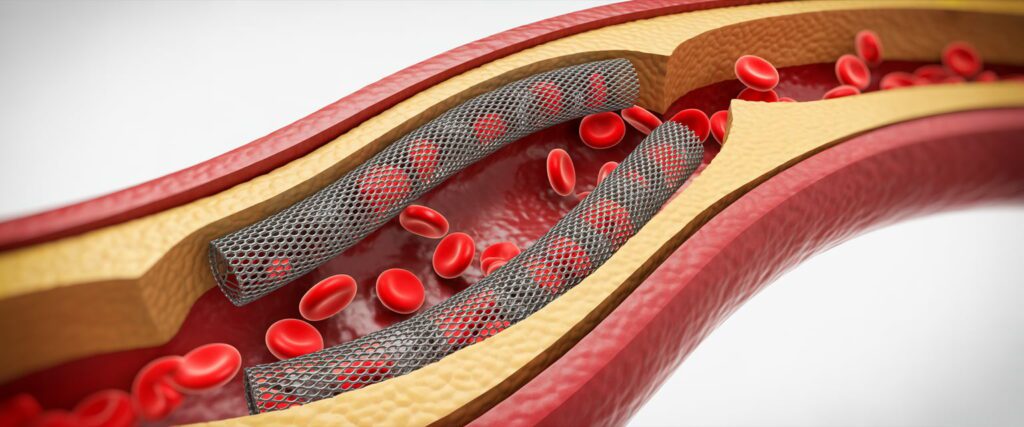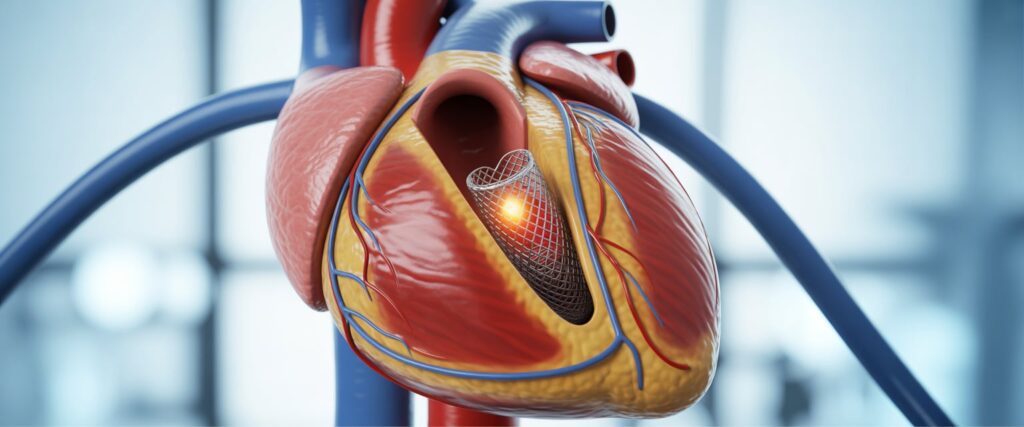The Presence of Coronary Angioplasty Implant and Graft: Codes & Clinical Relevance reflects more than a medical notation—it represents a critical milestone in a patient’s cardiovascular journey. As healthcare teams rely on precise documentation to guide long-term management, understanding the Presence of Coronary Angioplasty Implant and Graft: Codes & Clinical Relevance becomes essential for ensuring accurate coding, informed clinical decisions, and comprehensive follow-up care. This foundational knowledge helps clinicians, coders, and patients work together toward improved heart-health outcomes.
Table of Contents
Presence of Coronary Angioplasty Implant and Graft
The presence of a coronary angioplasty implant and graft means a person has undergone a procedure to restore blood flow to the heart by opening blocked arteries. This procedure, often involving a stent, helps prevent future blockages and reduces the risk of serious heart problems. Understanding what this means for ongoing care and health monitoring is key to managing cardiovascular health effectively.
When medical records include this phrase or the ICD-10-CM code Z95.5, it identifies that a coronary stent or graft is present as a result of prior treatment. This information plays an important role in clinical documentation, patient follow-up, and billing processes.

In exploring coronary angioplasty and grafts, it helps to know how these life-saving implants function, why they are used, and how accurate coding ensures appropriate care. Each part of this process—from understanding the procedure to applying the right diagnostic code—supports better management of heart disease and long-term health planning.
Understanding the Presence of Coronary Angioplasty Implant and Graft
The presence of coronary angioplasty implants and grafts reflects prior treatment for blocked coronary arteries and indicates the need for continued cardiovascular management. This condition involves both procedural and long-term care factors that affect monitoring, documentation, and patient health outcomes.
Definition and Scope
The ICD-10-CM code Z95.5 identifies the presence of coronary angioplasty implant and graft. It signifies that a person has undergone angioplasty with the placement of one or more stents or grafts in the coronary arteries. This code does not indicate an active disease but documents an existing medical device that remains in the body.
These devices are used after angioplasty, a procedure in which a balloon-tipped catheter widens narrowed arteries. Stents or grafts support the artery walls and help maintain blood flow to the heart muscle. Clinicians use this designation during follow-up visits, insurance processing, or when assessing cardiovascular risk factors.

It falls within the ICD-10 range Z00–Z99, which includes factors that influence health status and medical encounters. Recording this code ensures accurate communication about prior interventions and the presence of implanted cardiac devices.
Purpose of Coronary Angioplasty Implants and Grafts
Coronary angioplasty implants and grafts aim to restore and maintain proper blood flow in patients with coronary artery disease (CAD). When plaque buildup restricts the arteries, angioplasty reopens them to relieve angina and reduce the risk of heart attack. During this process, a small mesh stent or a graft is inserted to prevent the vessel from collapsing or narrowing again.
Their placement helps stabilize cardiac function and allows individuals to resume physical activity with fewer symptoms. In some cases, these devices eliminate the need for more invasive surgery like coronary bypass grafting.

Key purposes include:
- Supporting arterial structure
- Improving long-term oxygen delivery to heart tissue
- Decreasing recurrent blockage risk
- Facilitating faster recovery compared to major surgery
According to the 2025 ICD-10-CM listing, Z95.5 is a billable code, confirming that the implanted device remains present after angioplasty or grafting procedures.
Clinical Implications and Health Status
The presence of coronary angioplasty implants and grafts holds several clinical implications. It alerts healthcare professionals that future interventions, imaging, or surgeries must account for existing cardiac implants. It also affects the interpretation of chest imaging and informs medication decisions, particularly regarding antiplatelet therapy such as aspirin or clopidogrel.
Continuous monitoring is important to detect restenosis, thrombosis, or graft failure. Individuals with these implants may undergo regular stress tests, echocardiograms, or angiography to ensure proper stent function.

A summarized view of recommended ongoing management:
| Aspect | Focus |
|---|---|
| Medication | Antiplatelets, statins, antihypertensives |
| Lifestyle | Diet, exercise, smoking cessation |
| Surveillance | Cardiac imaging, lipid monitoring |
| Education | Recognizing chest pain or shortness of breath |
As described by Sprypt Medical Reference, acknowledging the presence of these devices supports safer clinical decision-making and coordinated long-term care.
ICD-10-CM Coding for Coronary Angioplasty Implant and Graft
Accurate ICD-10-CM coding helps document cardiac implant status for appropriate care and reimbursement. The presence of coronary angioplasty implants and grafts requires careful use of specific and related codes to reflect the patient’s cardiac history and current status.
Overview of ICD-10-CM Code Z95.5
The ICD-10-CM code Z95.5 identifies the presence of a coronary angioplasty implant and graft. This billable and specific diagnosis code indicates that a patient has a stent or similar coronary implant following angioplasty. It falls under Chapter 21, Factors influencing health status and contact with health services (Z00–Z99).

Z95.5 became effective on October 1, 2025, in the 2026 ICD-10-CM update. It is Present on Admission (POA) exempt, which means providers do not need to report whether the condition existed at admission. The code can be used in all HIPAA-covered transactions during its effective period. The detail provided by Z95.5 supports continuity of care by informing clinicians about coronary interventions already performed. More information is available from the official ICD-10-CM Z95.5 page.
Annotation Back-References in ICD-10-CM
Annotation back-references in ICD-10-CM link the code Z95.5 to related annotations and notes across the classification system. These links help users interpret code relationships such as “Includes,” “Excludes1,” “Excludes2,” and “Use additional code” instructions. They connect Z95.5 to its broader category, Z95 – Presence of cardiac and vascular implants and grafts.

Back-references also guide coders toward associated conditions that cannot be coded together. For example, a Type 1 Excludes note under Z95.5 prevents simultaneous coding with Z98.61, used for coronary angioplasty without an implant or graft. Review of annotations ensures that documentation aligns with correct coding rules. Coders rely on these notes to maintain coding integrity and to avoid errors that might delay reimbursement.
Related ICD-10-CM Codes (e.g., Z98.61)
The code Z98.61 describes a patient with a history of coronary angioplasty status without implant or graft. This code cannot be used together with Z95.5, as the two codes represent distinct clinical states. If a patient only had angioplasty but no stent or graft, Z98.61 should be selected instead.

Other related Z codes include Z95.828 (presence of other vascular implants and grafts) and Z95.9 (unspecified cardiac and vascular implant and graft). Proper differentiation among these codes ensures medical records accurately reflect device type and placement. Common documentation examples include the presence of a drug-coated stent or a bypass graft stent. The structure of these related codes helps streamline categorization by implant type and function.
Documentation and Billing Considerations
Precise documentation supports proper billing and compliance. When coding Z95.5, providers should clearly note the type of coronary implant, date of placement, and whether it involves a bypass graft or native coronary artery. Records must distinguish between drug-coated and bare-metal stents, as these details influence treatment planning and follow-up.

Billing staff must confirm that the diagnosis corresponds with the patient’s medical history and procedure records. Since Z95.5 represents an existing implant, not an active disease, it should accompany—but not replace—current condition codes. Consistent coding allows payers to process claims efficiently while providing clinicians with essential background on prior interventions. Current details can be verified through Z95.5 ICD-10-CM coding information.
Conclusion
Recognizing the Presence of Coronary Angioplasty Implant and Graft: Codes & Clinical Relevance is key to delivering safe, effective, and well-coordinated cardiac care. Through proper coding, accurate documentation, and consistent monitoring, providers can better understand a patient’s cardiovascular history and future needs. Ultimately, acknowledging the Presence of Coronary Angioplasty Implant and Graft: Codes & Clinical Relevance supports improved decision-making, optimized billing accuracy, and long-term heart-health management.
Frequently Asked Questions
Patients who receive a coronary angioplasty implant and graft often want clear information about safety, long-term results, follow-up care, and daily life afterward. Understanding these topics helps individuals manage their recovery, protect heart health, and follow professional guidance effectively.
What are the potential risks associated with a coronary angioplasty procedure?
Possible complications include bleeding, infection, or re-narrowing of the treated artery, called restenosis. Blood clots may form within the stent and increase the risk of a heart attack. According to the Mayo Clinic overview of coronary angioplasty, other rare risks include artery damage, kidney problems from the contrast dye, and irregular heart rhythms during the procedure.
How long do the benefits of a coronary angioplasty typically last?
The results can last for many years if the patient maintains healthy habits and follows medical advice. Most benefits depend on how well the patient manages conditions like high cholesterol, high blood pressure, and diabetes. In some cases, arteries may narrow again over time, especially without a stent or when lifestyle changes are not followed.
What lifestyle changes are recommended after undergoing coronary angioplasty?
Doctors often advise patients to stop smoking, follow a balanced diet low in saturated fats, and get regular exercise. Keeping a healthy weight and controlling cholesterol and blood sugar are also important. Cardiac rehabilitation programs can support these lifestyle changes through monitored exercise and education.
Are there any specific medications required after a coronary angioplasty and stent placement?
After stent placement, patients usually take antiplatelet medicines to prevent clot formation. Drugs such as aspirin may be combined with other agents like clopidogrel, ticagrelor, or prasugrel. The exact plan depends on the type of stent used and the patient’s overall health.
How often should one follow-up with a cardiologist after coronary angioplasty?
A first follow-up visit usually happens within a few weeks after discharge. Additional visits may occur every few months during the first year, depending on the patient’s recovery. Over time, annual visits are typical unless new symptoms arise or the cardiologist recommends closer monitoring.
Can a patient with a coronary angioplasty implant undergo MRI scans?
Most modern stents and grafts are made from MRI-safe materials, but it is important to confirm the exact type. A healthcare provider or radiology technician should verify that the specific implant model is approved for MRI scanning. The ICD-10 code Z95.5 for presence of coronary angioplasty implant and graft may be used in medical records to identify patients who have these devices.

